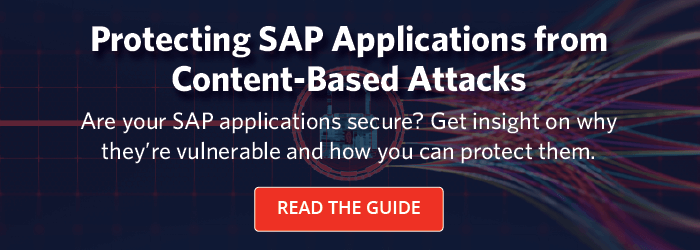Why All Companies are at Risk of Cyberattacks (Yes, Even Yours)
Feb 2, '21 by Joerg Schneider-Simon
“My business is too small – cyberattackers won’t even have me on their radar.”
“We’re big, but we have a great team monitoring our cybersecurity, so we’ll be fine.”
Whether your business is big or small, you should always suspect that a cyberattack is around the corner.
In fact, it may come from just across town: Accenture's Third Annual State of Cyber Resilience Report reveals that 40% of all security breaches are of indirect origin. It is safe to assume that the targets are usually the weak links in the supply chain or the business ecosystem itself.
If we take account of these indirect cyberattacks, the total number of cyberattacks increases by 20% compared to last year's figures. This shift is quite troubling for businesses, as it mandates them to look beyond their existing four walls.
On average, security programs only protect about 60% of a business's ecosystem. And the remaining 40% remains unprotected in the face of some severe threats.
Why are Cyberattacks a Serious Risk?
In 2018, the Ponemon Institute conducted a cybersecurity survey that studied over 1,000 small and medium-sized enterprises in the U.K. and U.S. They found that the frequency of cyberattacks increased by 6% from the previous year, with 67% of respondents suffering a cyber-attack in the last year. Only 28% of respondents rated their business's response to attacks, threats, and vulnerabilities as highly effective.
The most significant finding was that most of the businesses surveyed had undergone a malware attack or exploit that wasn't recognized by their antivirus software or intrusion detection mechanism.
To understand why cybercriminals would attack your business, it's vital to know the value of your data and your clients' personal information.
What Do Cyber Criminals Want from Your Company?
Cybercriminals have various motivations, but they usually fall into three categories: money, data, and access.
Money
Hackers can work from anywhere in the world to push through your organization's cybersecurity defenses. Many global citizens make less than $1,000 a month, but the purchasing power of a dollar differs from country to country. Therefore, stealing your organization's cash can be extremely lucrative for a hacker in China or Russia—the top two countries from where cyberattacks originate.
Clients' Personal Data
For most organizations, a breach in clients' personal data is costlier than losing cash. Suppose a hacker can access your clients' information. In that case, your company is at risk of a public relations crisis and, subsequently, a tarnished reputation. You could also face legal action from your clients and the government.
For example, Equifax's 2017 data breach compromised 147 million people's personal information. The credit bureau's global settlement with the FTC included a payment of up to $425 million that went towards helping people affected by the data breach. Furthermore, people affected by fraud or identity theft due to the violation can file expense claims until January 2024.
Cybercriminals sometimes sell, on the dark web, information they've stolen from organizations. If they breach a human resources database, for example, they gain access to each employee's Social Security number and even copies of their passport. This data is valuable.
Besides employees' personal data, most businesses also need to safeguard intellectual property, such as source code for software or pharmaceutical formulations. Hackers can hold this confidential information for ransom, sometimes selling it to competing businesses or extorting money from the victim organization.
Any cybersecurity attack makes your organization vulnerable to extreme financial consequences. Hackers that access accounting information are capable of rerouting payments to themselves by impersonating vendors.
Access
Hackers will often carry out cyberattacks against an organization to gain access to more lucrative targets. For instance, hackers use supply chain attacks to infiltrate business systems through an outside provider or partner who has access to the victim organization's data.
Small- and medium-sized businesses are also at risk for access-motivated attacks, since hackers can use them to reach larger companies.
Is Your SAP System at Risk of Cyberattack?
You should take all possible measures to protect your organization from cyberattacks. Most organizations' data is stored in Enterprise Resource Planning (ERP) systems, which are largely supplied by the multinational software corporation SAP.
Many businesses believe that their organization's existing cybersecurity measures are enough to protect their data. Often, however, even antivirus solutions designed for enterprises won't protect your SAP system and its data.
SAP systems use file transfer methods not covered by off-the-shelf antivirus, like ODATA, RFC, DIAG, etc. Once transferred, files are stored in the database, a Content Server or a Document Management System, neither of which a standard anti-virus can scan.
Bottom-line: If your antivirus isn't specialized for an SAP system, it won't be able to scan these files for threats.
Internet-enabled SAP systems are also at risk for content-based attacks. Hackers can conceal these attacks in form data whenever an SAP application is accepting external input.
How You Can Protect Your SAP System
The increasing frequency and sophistication of cybersecurity breaches makes it clear that it's not a question of whether an organization will become a target, but rather when. A data breach could cause irrecoverable monetary and reputational loss for your organization.
Many organizations use SAP systems but don't use specialized application security and antivirus software to protect the ERP framework's data. Your SAP system and its data need antivirus and application security software that is designed for their protection. bowbridge Anti-Virus for SAP Solutions works smoothly with SAP's internal architecture to provide your system with constant protection against threats. bowbridge also provides you security against content-based attacks for your Internet-enabled SAP systems in the form of bowbridge Application Delivery Controller.
The right solutions – and the right level of vigilance against cyberattacks – can provide your business with the ultimate protection, thereby keeping your data, your employees' and clients' personal information, and your finances, safe.


Share this on social: